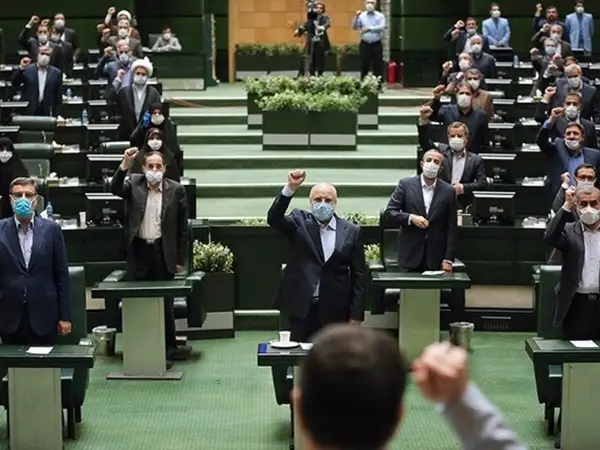A regime insider close to Iran's ruling circles says turnout in the next parliamentary election is likely to be as low as 15 percent in the capital Tehran.
Reza Nili, the editor of Nemayandegan website, which covers news and analysis about the Iranian parliament (Majles) says the prediction which is based on the latest polls in Tehran indicates that such a low-turnout election will produce an "undesirable" parliament.
The turnout in the latest round of parliamentary elections in 2020 was just over 26 percent in Tehran, which was the lowest ever. However, the government announced the general turnout as over 42 percent.
Reports in the Iranian media in recent weeks said that most lawmakers are currently either working hard to garner support for the next election in early 2024 or trying to appease the hardliner government to give them a job in case they are not re-elected.
According to semi-official news agency ISNA, the next parliamentary election in Iran is likely to be overshadowed by the ongoing protests and the uprising that started in September following the death in custody of the young woman Mahsa Amini.
ISNA added that Iran's reformist parties whose candidates were barred from taking part in the previous election by the Guardian Council have not started any campaigning or planning for the next election.
Hardliners, having the support of Supreme Leader Ali Khamenei, used the Guardian Council that vets candidates to disqualify the great majority of reformists in 2020. They are now probably looking for some kind of assurance from before they begin to think of taking part in the election. This comes while less than 11 months remain before registration for the next election starts.
It appears that the turbulent months of late summer and autumn and the protests that still continue in the middle of the winter have left no motivation for aspiring candidates to run for the Majles. This could be the first signs to indicate that even regime insiders have their doubts about the regime's legitimacy in the eyes of voters.
According to ISNA, at least part of the Iranian society has still not received a definitive response from the government to its demands. Furthermore, apart from the social and cultural upheaval, concerns about the economy also have their impact as the economic crisis in Iran has impoverished tens of millions of people.
In the meantime, so-called reformist and moderate figures who were barred from taking part in previous election, attribute the country's problems, including the recent protests to the takeover of the entire government by conservatives. There is very little indication that hardliners running the country, particularly Supreme Leader Ali Khamenei who has the final say about everything in Iran, have changed their minds about allowing reformists to run.
It appears that the disillusionment about the election process in Iran is not limited to reformists. Some Conservatives such as former foreign minister Manouchehr Mottaki said his peers will wait until the end of the current Iranian year in late March to make their decision about taking part in the election.
Former interior minister Mostafa Pourmohammadi, the secretary of the right-wing Combatant Clerics Association also said that his group needs assurance from the government before deciding to take part. He pointed out that the regime's legitimacy will increase only if everyone is allowed to run for the parliament.
On Sunday, the Iranian government set March 1, 2024 as the election date, but even the Interior Ministry officials did not look so upbeat about the announcement. One could see in their faces that they look at an unpredictable future when they may not be in their post if nationwide protests gain momentum once again.
